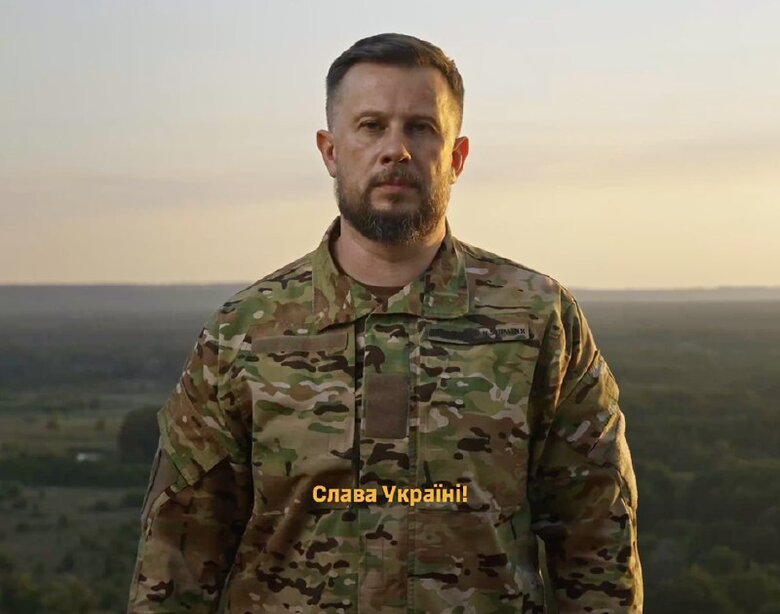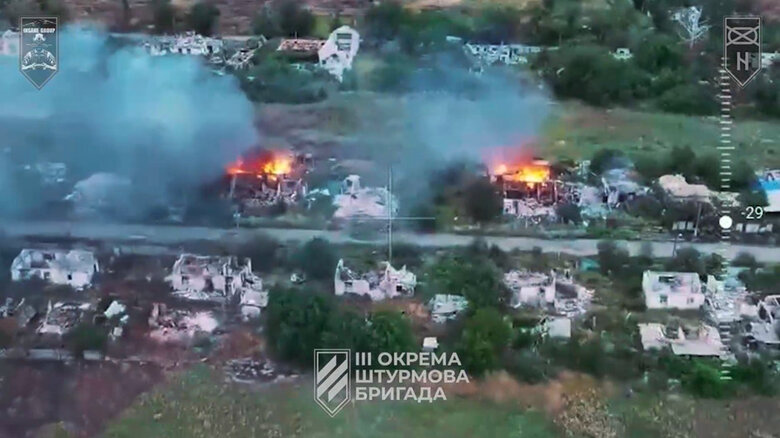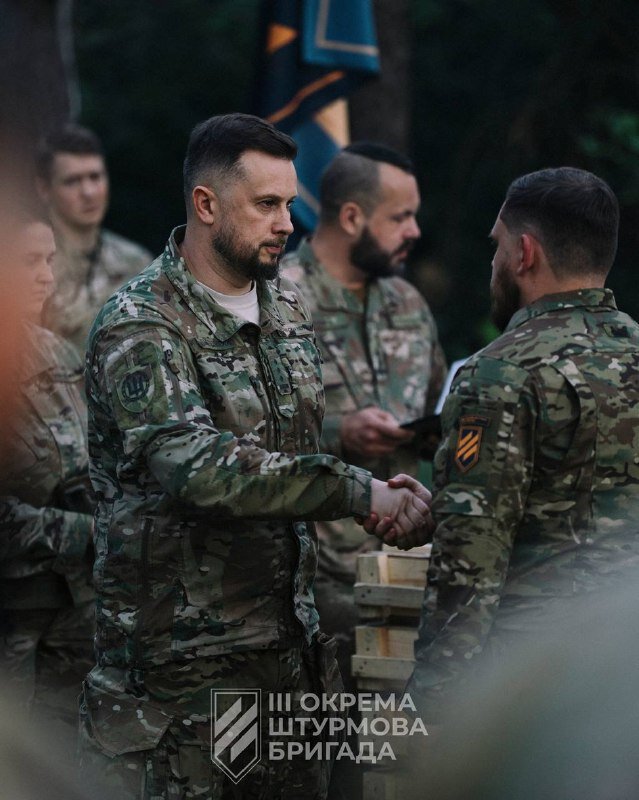Biletskyi’s third corps enters battle: holds off enemy advance, stabilizes front and calls on all to serve
Defense Forces began transitioning to a corps system in February 2025. The changes were driven by poor defensive effectiveness, poor command and control, and losses — so-called attached units were just plugging "holes," wearing down in battles. The corps were meant to change that. It’s important to understand that these are not new units, but formations that combine several brigades, battalions, and other units into a single mechanism — they operate along one frontline (rather than being scattered across different sectors) and have unified, stable command and control. Given the enormous cost of failure, the formation of corps was entrusted to Ukraine’s best brigades and commanders. The first to show results was the Third Army Corps under Colonel Andrii Biletskyi.
He announced that the Third Assault Brigade would become a corps on March 14, 2025. A few weeks later, the corps formed its own unmanned systems regiment and began integrating other brigades and units. At that time, Biletskyi announced that the corps would show initial results in three to four months, with tangible outcomes expected within eight months. They met the deadline: by early summer, the Third Army Corps received a sector of responsibility and was among the first to enter combat. On August 4, Biletskyi, as corps commander, reported to the public for the first time.
He reported that the corps is conducting a large-scale defensive operation on the Borova and Lyman directions, holding back the Russian advance on the last line of defense in northern Donbas. Currently, it holds a vast front line stretching 150 kilometers, one-eighth of the entire frontline. This sector is the second most intense area of assault operations by the Russian army. The occupiers have a significant numerical advantage here, with Russian generals pushing them forward to gain leverage for Putin in case of negotiations.
According to the corps command, large unit engaged the main efforts of three Russian armies, the 20th and 25th, which are reinforced by separate units of the 1st Tank Army. The 1st and 20th Armies have the best supply and replenishment because they belong to the Moscow Military District. Despite this, their offensive was successfully halted. In turn, the corps is conducting effective counterattacks and has even managed to push the enemy back in several areas. Thus, from its formation to its real impact on the course of the war, Biletskyi’s unit achieved this in just a few months.
Hits by fighters of the "Insane Group" from the 2nd Mechanized Battalion of the Third Assault Corps.
"The corps and its units are growing, sharing experience, building a unified corporate spirit, and integrating new brigades and units. Here and now, we are creating a structure capable not only of effectively waging war but also of defining its new rules. We adapt to new challenges, scale up proven solutions on the frontlines, and implement innovations and modern approaches in management, combat training, as well as our moral principles and guidelines," Biletskyi stated.
He noted that the corps is still young but is gradually transforming into a true military brotherhood. The size and structure continue to grow—thousands of combat and non-combat vacancies are open: air defense, drones, electronic warfare, medical services, communications, repairs, logistics, and other critically important areas. The commander invited everyone to join the Third Army Corps to "change and make history together."
More information, citing his own sources, was shared earlier by Yurii Butusov, journalist and platoon commander in "Khartiia." According to his data, the Third Corps took responsibility for its sector on June 4 "under extremely critical conditions." Over two months, the situation here has been significantly stabilized. From June 4 to July 28, the enemy captured 16 square kilometers. Six months prior, the enemy had its largest advance here, 198 square kilometers. This indicates a noticeable slowdown in the offensive. As a result of counterattacks, the Third Corps liberated 8 square kilometers. The situation remains difficult, but all attempts by three Russian armies to break through the front are being repelled. The intensity of fighting is increasing.
Butusov reported having detailed information on our average monthly irrecoverable losses: they have decreased roughly twofold compared to the "pre-corps" period. At the same time, the Third Corps has not received significant reinforcements, more drones, or ammunition. It is likely still not fully staffed with units, since other brigades besides the Third Assault are not mentioned here.
So, what accounts for the achieved results? According to Butusov, the corps command changed its defensive tactics across the entire sector. Meeting engagements and "continuous unprepared counterattacks for showy reports" were halted. Units are now deployed into battle in an organized manner. Coordination between reconnaissance and fire strikes is systematically improving, the defense has stopped breaking down, and "holes" no longer have to be plugged by massing troops. Biletskyi was granted authority to appoint commanders under his own responsibility. As a result, lies disappeared from situation reports, and successful models of organization and management are scaling up quickly.
In his opinion, Biletskyi has proven that a competent brigade commander, when given authority, trust, and support from leadership, can significantly improve combat effectiveness along a large front sector within two months. "The reason for the continued Russian offensive is primarily issues with command and organization within our forces. The deployment and strengthening of corps, elimination of tactical groups, trust in corps commanders, autonomous responsibility in personnel decisions at the corps level, and planned monthly reinforcement with personnel, drones, and ammunition will, in a short time, improve the situation on any front sector, reduce our losses, and increase enemy casualties," Butusov concluded.
From the Third Assault Brigade to the Third Corps, ceremonial presentation of commemorative coins and flags to servicemen.
The Third Corps stands firmly on the unchanging priorities of its commander, who upheld them since Azov and the Third Assault Brigade — combat training, leadership, technological proficiency, and professional sergeants. Here, the focus is on leadership, esprit de corps, and initiative. Defense is maintained through the extraordinary efforts of infantrymen, the professionalism of unified fire support, the accuracy of UAV crews, and the coordinated work of the entire command and logistics. Interestingly, 95% of the corps’ command staff were not trained at military academies, they are volunteer fighters who have risen from infantrymen to commanders. "To fully equip a soldier in the trench and the entire Third Army Corps, everyone is needed. Without exception," wrote one of the corps commanders, Dmytro Kucharchuk, "Slip."
According to Militaryland, as of early August, four brigades have joined the corps: the Third Assault, 53rd, 60th, and 63rd Mechanized Brigades. The 122nd Communications Battalion is also reportedly part of the corps. It is expected that the formation will also include a heavy mechanized brigade and a specialized artillery brigade. The corps command has not commented on this information.
Serhii Bondarenko



